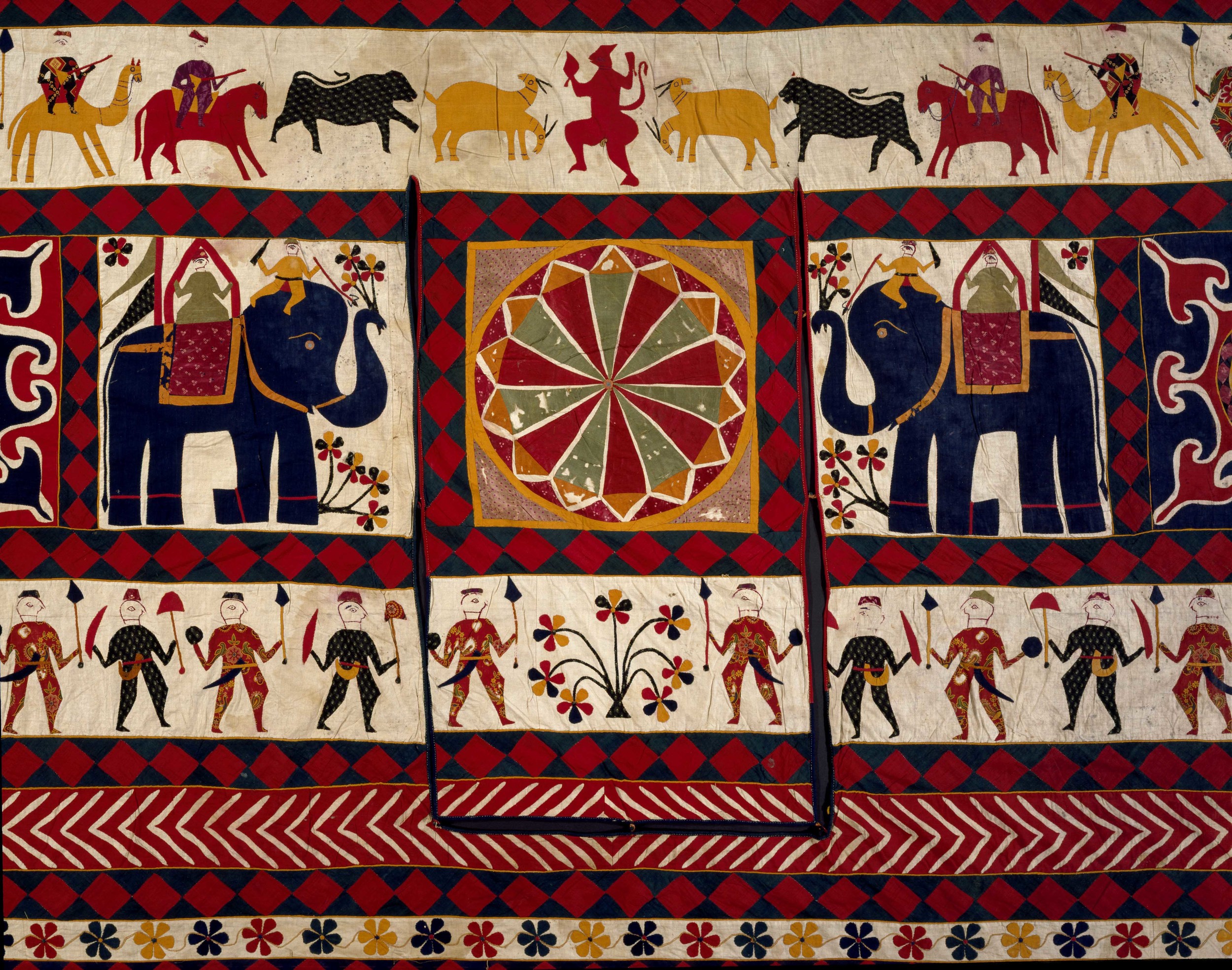The Fabric of India at the Victoria & Albert Museum
Wall hanging, cotton appliqué, Gujarat , 20th Century, Victoria and Albert Museum, London. Found on the side of a road in New York!
If you're reading my blog, you probably have a passing interest in Indian textiles. So I must urge you, if you are within reach of London at all before 10 January, you must go and see the Victoria and Albert Museum's landmark exhibition, The Fabric of India. It's wonderful!
This comprehensive exhibition pulls together a vast number of exhibits, many collected in the 19th century for what was once the India Museum in London (1801-1879). It explores the wide variety of materials and techniques used to create textiles both for everyday use, and for the wealthy. It also documents the history of India's export of textiles all over the world.
There is too much to highlight in this short blog post, but it was interesting to see the large number of pieces from Gujarat (where Stitch by Stitch embroidery work comes from), and particularly the Kutch region where our weavers are based. Gujarati's "embroider the best of any people in India, and perhaps the world" remarked one 18th-century English scholar. There was a huge demand for Gujarati embroidery in Europe during the 17th and 18th centuries. Gujarat was also the main centre of weaving innovation for more than 500 years.
Rabari child’s jacket, cotton embroidered with silk, 20th century, Victoria and Albert Museum, London
The opening section of the exhibition explores how fabrics are dyed with natural materials such as pomegranate and indigo - techniques which are having a revival today - and the complex techniques of block printing, weaving and embroidery throughout history. There are some excellent videos demonstrating the arts of indigo dyeing, the carving of printing blocks, hand loom weaving, and ari embroidery. If you can't make it to the exhibition, you can see these short films on the V&A website here.
Wall hanging (detail), cotton appliqué, Gujarat for the Western market, ca. 1700, Victoria and Albert Museum, London
Indian textile-makers exported fabrics to the Middle East, Mediterranean, Africa and Asia for many centuries before European traders arrived in the 15th century. Trade was in both everyday fabrics as well as luxury textiles. India's expertise lay not only in its highly skilled artisans, but also in understanding and meeting the needs of its export markets.
Sultan Tipu's Tent, 1725 - 1750, National Trust Images
We were delighted to see the work of several contemporary Kutch artisans in the exhibition, including block-printing from Khalid Amin, Rabari shawls from Dayalal Kudecha, and textiles from the Kiri Makaudi family of dyers. The exhibition celebrates the revival of these traditional skills, championed especially by the fashion and film industry.
In the vibrant finale to the exhibition, a selection of the most exciting saris being produced today are shown, including one featuring the wonderful clamp-dye work of Aziz and Suleman Khatri, whom we visited recently in Kutch. I have one of their gorgeous silk scarves!
A silk scarf clamp-dyed by Aziz and Suleman Khatri, Kutch. Photo: Stitch by Stitch
The Fabric of India, supported by Good Earth India, with thanks to Experion and Nirav Modi, is at the V&A from 3 October 2015 – 10 January 2016, vam.ac.uk/fabricofindia






